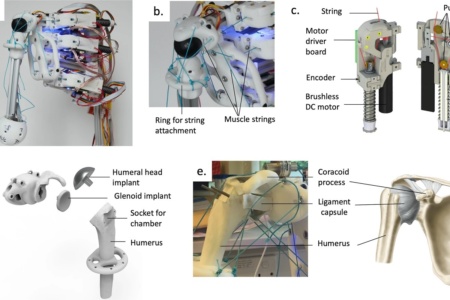
The science of tissue engineering – or growing human cells for use in medicine – is still developing. Only the simplest, laboratory-grown cells are suitable for use in experimental treatments. However, a new tissue engineering method proposes growing cells on a moving robot skeleton.

As a rule, living cells are grown under static conditions: only petri dishes and miniature 3D scaffolds are needed. It has previously been proven that tissue can also be grown on moving structures such as hinges. However, they stretched or flexed the fabric in only one direction. But researchers at the University of Oxford and robotics firm Devanthro decided that the best way to create tissues that could move and bend was to recreate their natural growth environment as closely as possible. Therefore, a team of scientists decided to imitate the human musculoskeletal system with the help of a robot.
An article published in Communications Engineering describes how scientists adapted an open source robot skeleton and created a special environment for growing cells (bioreactor) on it so that they bend and stretch in all the right directions.
For this, the shoulder joint was chosen. The researchers then created a bioreactor that can be placed on an artificial shoulder using biodegradable threads stretched between two anchor points, like a tuft of hair. This entire structure was then encased in an outer membrane similar to a balloon.
The thin filaments were then seeded with human cells, and the shoulder chamber was filled with a nutrient-rich fluid designed to stimulate growth. Cells were grown for two weeks and were “trained” daily for 30 minutes.
The team noted the difference between exercising cells and those grown in a static environment. However, researchers are not yet sure if these changes have been beneficial.
Lead researcher on the project, Pierre-Alexis Muti, from Oxford University’s Botnar Institute of Musculoskeletal Sciences, told The Verge that the differences were based on measuring the activity and growth of certain genes. And they were, at best, ambiguous in terms of future medical applications.
That is, scientists have shown that it is possible to grow living cells on a roboskeleton. Now they have to find out if there is any benefit from this. Potentially, in the future, patient data can be used to create exact copies of their bodies, which will allow different tissues to be grown for operations on human copies.
Flexible microrobots have been developed for splicing damaged bones – they harden, acquiring the desired shape




